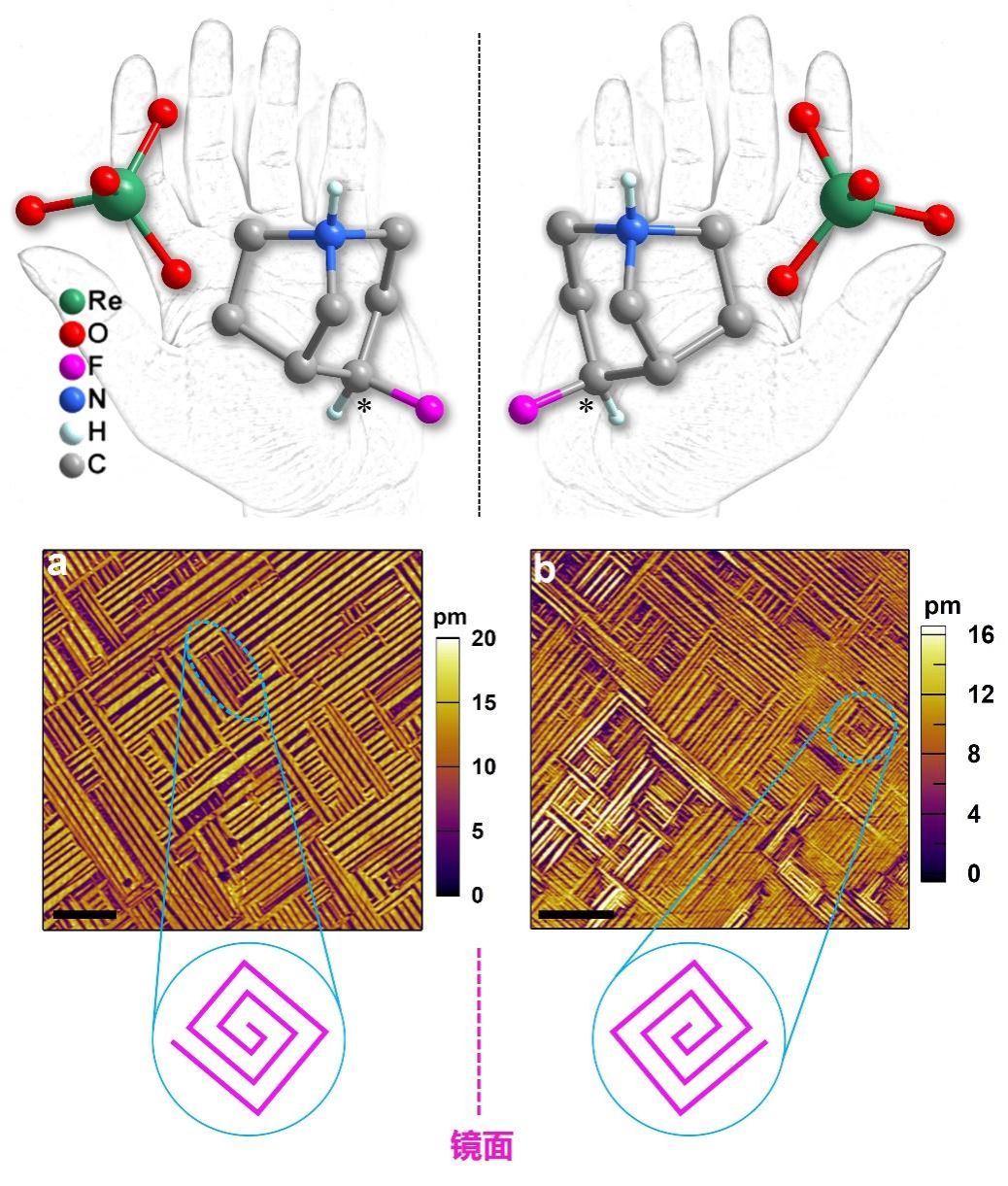Recently, researchers from the Ordered Matter Science Research Center at Nanchang University, including Professor Liao Weiqiang, have made significant progress in the field of molecular ferroelectric materials. They have, for the first time, observed intrinsic chiral domain structures in enantiomeric molecular ferroelectric films. The related findings, titled "Enantiomeric Ferroelectric Chiral Domains," were published in the Journal of the American Chemical Society. Professor Song Xianjiang from Nanchang University is the first author of the paper, and Professor Liao Weiqiang is the corresponding author. Nanchang University is the sole institution responsible for the research.
Chirality, a ubiquitous feature within the natural world, describes the property of an object that cannot be superimposed on its mirror image. When combined with physical properties like ferroelectricity, chirality often gives rise to novel physical phenomena and applications. In ferroelectric materials, regions with uniform spontaneous polarization are called domains. Chiral domains in ferroelectrics exhibit switchable spontaneous polarization and an intrinsic coupling between polarization and chirality, showing various novel physical phenomena and functional properties distinct from bulk materials, thus opening up new possibilities for developing novel nanodevices. Until now, various exotic properties have been found in chiral topological domains, such as giant conductivity enhancement, macroscopic negative differential capacitance, resonant tunneling, photovoltaics, and magnetoresistance, holding promise for applications in high-density storage, logic, and sensing devices. However, chiral domain structures typically require curved spontaneous polarization, making them difficult to construct. To date, they have only been observed in a few inorganic oxide ferroelectrics, such as chiral skyrmions in PbTiO₃/SrTiO₃ superlattices and chiral vortices in La-doped BiFeO₃ nanoislands. Notably, these chiral domains often appear in size-constrained nanosystems, where depolarization effects are more pronounced and polarization curing occurs at interfaces/surfaces or domain walls. Furthermore, a delicate competition exists among electrostatic, elastic, and polarization gradient energies in these systems, which is highly sensitive to scale, leading to diverse chiral domains. In contrast to inorganic ferroelectrics, enantiomeric molecular ferroelectrics possess intrinsic chirality due to their inherent chiral centers, offering a new approach to constructing intrinsic chiral domains without relying on geometric or strain constraints.

Figure 1. Intrinsic chiral domain structures observed in (a) [RFAO]-[ReO4] and (b) [SFAO][ReO4] thin films. The * refers to chiral center. The pink dashed line denotes a mirror plane (m).
Crystal symmetry often manifests as specific patterns on the surface of ferroelectric materials. For example, crystals in trigonal or hexagonal systems exhibit domain structures with triangular or hexagonal symmetry. Theoretically, from a crystallographic perspective, ferroelectrics with a single chirality could form mirror-symmetric chiral ferroelectric domains due to their crystal symmetry. However, no experimental observation of mirror-symmetric homochiral domain patterns has been reported in the century since the discovery of ferroelectricity. Guided by Prof. Ren-Gen Xiong’s Molecular Design Principles for Ferroelectrics: Ferroelectrochemistry, Prof. Wei-Qiang Liao’s team designed and synthesized a pair of enantiomeric molecular ferroelectrics, [RFAO][ReO₄] and [SFAO][ReO₄] (RFAO/SFAO = (4R,5R/4S,5S)-4-fluoro-1-azabicyclo[3.2.1]octane), which undergo two ferroelectric phase transitions: 222F2 at 350 K and 432F2 at 463 K, respectively. Through simple phase transition treatments, large-area chiral spiral domain structures were observed for the first time (Figure 1). Both [R/SFAO][ReO₄] crystallize in a chiral point group in both the ferroelectric and paraelectric phases, featuring not only molecular chirality but also stacking chirality. During the paraelectric-ferroelectric phase transitions, domain formation is determined by crystal symmetry, with chiral stacking remaining unchanged. The opposite chiral stacking in R and S configurations leads to the formation of distinct chiral domains. Thus, the formation of chiral domains in enantiomeric ferroelectrics with intrinsic chirality does not require special geometric or strain boundary conditions. In the past decades, these chiral domain structures driven by intrinsic chirality have not been reported. This work represents the first experimental observation of chiral domain structures in enantiomeric molecular ferroelectrics, providing new insights into the origin of chirality and the coupling between chirality and polarization. This work is a groundbreaking new discovery under the guidance of Ferroelectrochemistry, paving the way for developing molecular ferroelectrics with intrinsic chiral domain structures.
Paper Link:https://pubs.acs.org/doi/10.1021/jacs.5c04038
Reviewers: Xu Hang, Zhu Wenfang, Chen Xiaochi